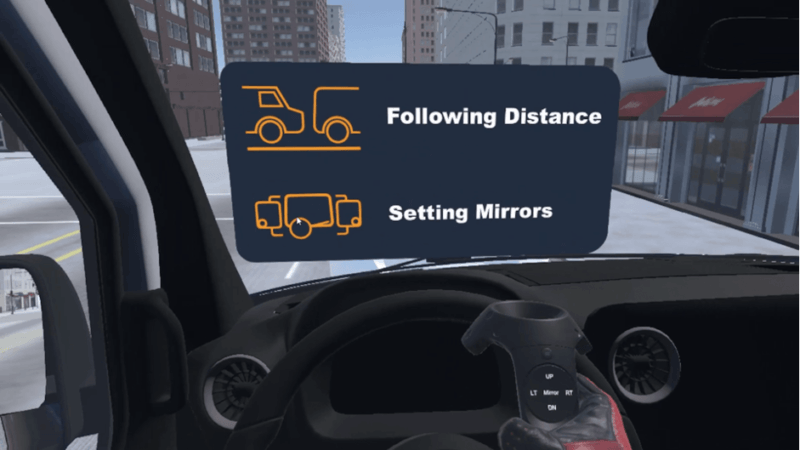Are You Ready To Explore XR training?
Extended reality (XR) training extends a learner’s reality by merging the real world with digital materials or fully simulated environments. Through XR training activities, learners can practice completing complex tasks and interacting with 3D objects from a safe, risk-free environment.
XR training can be broken down into the following 3 immersive learning technologies:
- Augmented Reality (AR)
AR superimposes 3D computer-generated objects onto a real-world environment. Once placed, learners can complete realistic interactions with digital objects that build their technical skills and product knowledge. - Virtual Reality (VR)
Perhaps the most well-known XR training tool, VR utilizes an environment made up of 360° VR [1] or full VR [2] simulations. In these environments, learners can develop their skills by encountering true-to-life scenarios without facing real-world risks. - Mixed Reality (MR)
A combination of AR and VR, MR blends the physical and digital world through advanced computer technology, graphics, and input systems. With MR, learners remain in their real-life environment while interacting with digital objects and people, videos, pictures, and more digitized elements.
4 Benefits Of Using Extended Reality In High-Risk Industries
Using XR training in high-risk industries comes with the following 4 benefits:
- Keeps equipment and employees safe
With XR, organizations can protect their equipment and employees by creating realistic digital models of equipment that take the risk out of training on real-life machinery. - Reduces on-the-job mistakes
XR creates a learning environment where employees can learn from mistakes and confidently apply this knowledge to the real world. Learners can repeat processes on complex machinery, make mistakes, and learn from them, all before stepping foot on the job. - Develops skills in a risk-free environment
XR training develops employees’ skills in a risk-free learning environment where they don’t need to worry about damaging equipment or injuring themselves or others. - Ensures long-term knowledge retention
With experiential learning in an XR environment, employees learn by doing. Through hands-on, interactive learning activities with XR technology, learners are more likely to remember information [3] for longer periods of time post-training.
3 Examples Of Extended Reality For High-Risk Training Scenarios
1. Prepare Retail Or Food Service Employees For An Armed Robbery
With full VR technology, your organization can recreate a robbery scenario at one of your store’s locations. Recommended for retail and foodservice industries, VR allows learners to take on the first-person perspective of a robbery scenario where they must navigate the situation by making critical decisions that affect the robber’s behavior.
For example, the robber may ask a learner to hand them all of the money in the register. A learner can choose to comply or reach for their phone. Based on their decision, the robber will react and continue testing the learner throughout the scenario. This training teaches learners proper protocols, tips to stay safe, and decision-making during heightened moments they may experience.

2. Train Learners On Operating And Repairing Complex Equipment
With AR technology, your organization can create detailed 3D models of complex machinery. Through a tablet or a smartphone device, learners simply anchor a digital object on a flat surface in front of them and then complete realistic interactions with the object.
For example, learners can practice troubleshooting issues and completing multi-step tasks, from turning an object on and off to repairing one of its parts. This AR activity gives learners an inside view of the inner functions of objects, while also allows them to learn how to operate and repair expensive machinery without risk.

3. Simulate A Last-Mile Delivery Scenario For Supply Chain Employees
The last step in the product delivery process, last-mile delivery is key to ensuring products arrive on time and in the right condition. Within a fully immersive driving experience, learners are seated behind the wheel and must complete processes as if they were real.
For example, within a fully simulated experience, learners are tasked with adjusting their mirrors, checking that their vehicle is safe to drive, and successfully driving at the right speed and in the right direction. Throughout the activity, learners must avoid potential risks, such as pedestrian crossings and traffic violations.
Do You Want A Low-Risk, High-Reward Training Solution?
Now that you understand what extended reality training is, it’s time to consider what this technology could look like at your organization. Are you ready to dive into all that extended reality training has to offer?
References:
[1] What Is 360º Virtual Reality? Less Than 100 Words
[2] What Is Full Virtual Reality? Less Than 100 Words
[3] 5 Benefits Of Experiential Learning In The Workplace
Additional Sources:
- Robbery Training: Virtual Reality Demonstration
- Augmented Reality Demo: Engine Training
- Driving Simulation VR










